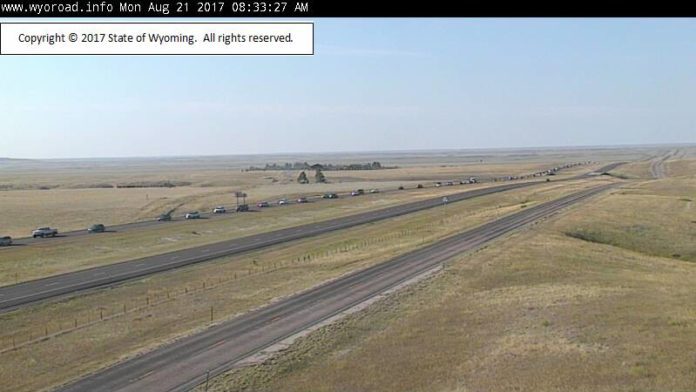Eclipse causes major traffic issues; fleet software keeps track
Major traffic snarls are expected today across the country, as eager eclipse watchers don their glasses and vie for the best view in the “path of totality” that extends from Oregon to South Carolina. This poses a host of transportation issues, for both long-haul and local trucking companies which have vehicles on the road, according to Kelly Frey, VP of marketing for Telogis, part of Verizon Telematics.
In Wyoming, the state department of transportation said that lines of traffic began stacking up on Interstate 25 around 3 a.m. and were at a standstill by 7:30 a.m.

Some states have issued unusual restrictions on truckers to help the states deal with the increase in non-commercial vehicles. In Oregon, for example, the state has banned all extra-wide loads from operating in the state until after the eclipse, temporarily shut down state road construction projects (although the work zones remain in place) and warned truckers that they may have a hard time finding parking and that in general, they “need to prepare for long delays in the days before and after the event because of traffic.”
“There certainly will be disruption,” said Frey. “Anything along the path of totality is going to be impacted.”
He pointed to Wyoming in particular, which was expecting a flood of 600,000 additional vehicles on its roads. “That’s more than the entire state has for a population,” Frey said. “The infrastructure is not set up for it — that’s a lot of people to move.”
In Wyoming, traffic counts over the weekend were up nearly 20% from five-year averages. Some areas saw far heavier traffic than usual; the Wyoming DoT said that on US 287 south of Tie Siding near the Colorado border, vehicle traffic was up by 85 percent; and that on US 287 east of WYO 28 and Lander, traffic increased by 158 percent.
Frey said that transportation companies have been preparing for the disruption of the solar eclipse, and that fleet tracking software is helping Verizon Telematics customers deal with the event. While a few small companies are likely to shut down altogether for the day, he said, most trucking operations “are used to making changes and being flexible and adaptable.” Navigation software and real-time traffic information can help drivers work off of good information about road conditions, he said, and even offers some predictive information — unlike consumer navigation tools, the software can be used to adjust expected traffic congestion levels and make that data available to routing software. Even if traffic jams can’t be avoided, Frey said, companies can at least be proactive about notifying their customers about expected delays based on such information.
Since the solar eclipse is a known and expected event, Frey said, it offers a particularly good opportunity to make use of predictive data. Drivers can, for example, find parking spots for their rigs early and account for delays in their allotted number of driving hours so that they don’t find themselves out of compliance with federal rules about the number of hours they spend behind the wheel. The drivers themselves, Frey added, probably want to see the solar eclipse, too.
“Technology is changing fleet management with this ability to use more real-time data to make decisions,” Frey siad. “This is an example where it’s really a combination of planned data and real-time traffic data, as well as a known event.”

